What is social media intelligence?
Social media intelligence - Stop checking your fan growth chart daily and discover how to make informed decisions.
September 5, 2024
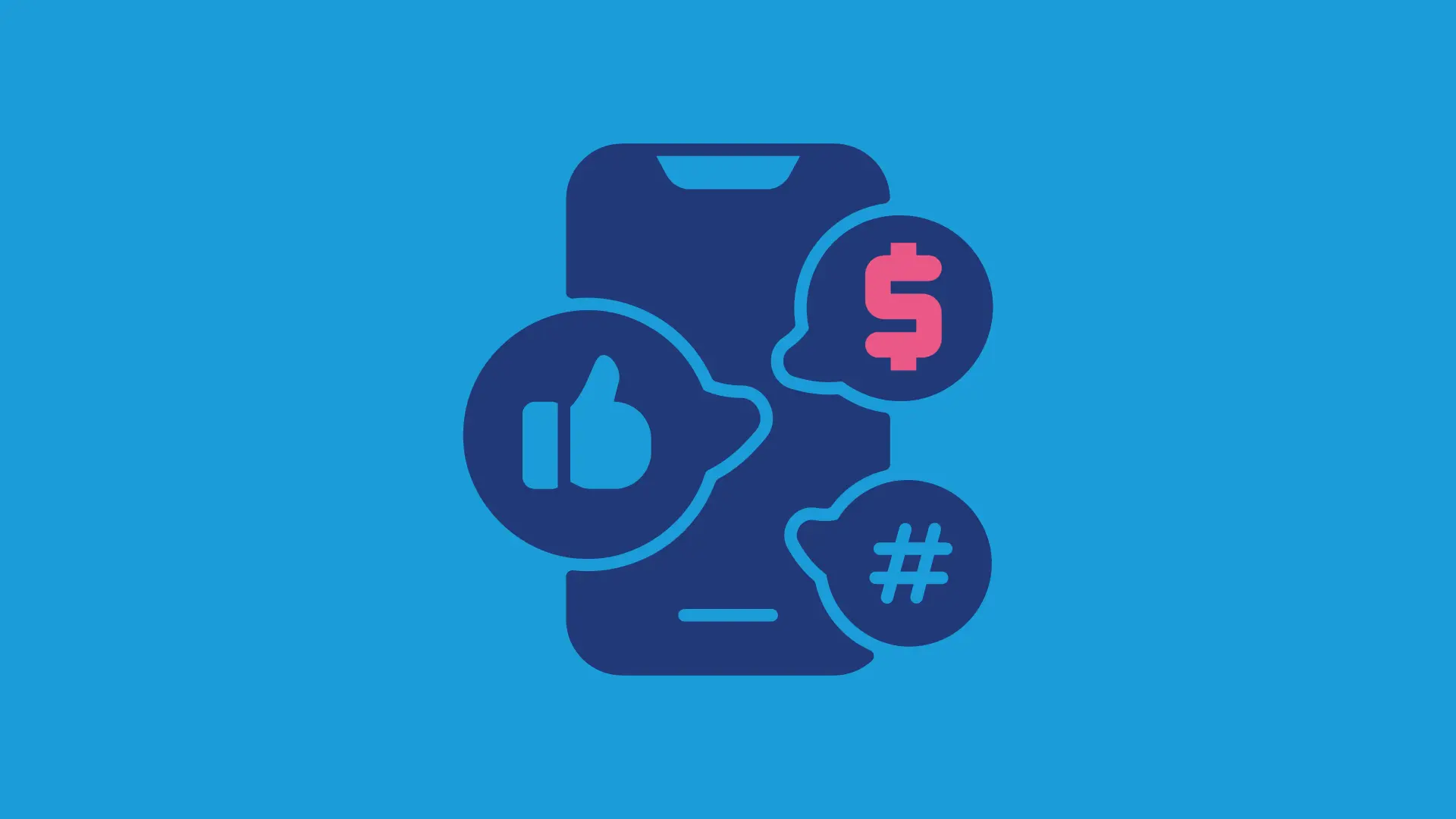
With over 4.5 billion social media users worldwide, there are masses of social media data produced and requested by global companies daily.
Many of those companies monitor that data for information that makes a difference to them, like the number of times their brand is mentioned and the sentiment toward them. Keeping an eye on these metrics – and using the data to critically analyze the causes of engagement fluctuation – is the hallmark of social intelligence.
In this guide, Talkwalker explores exactly what social media intelligence is, its benefits, and use cases and how it can be used to boost brands’ social media activity.
Table of contents
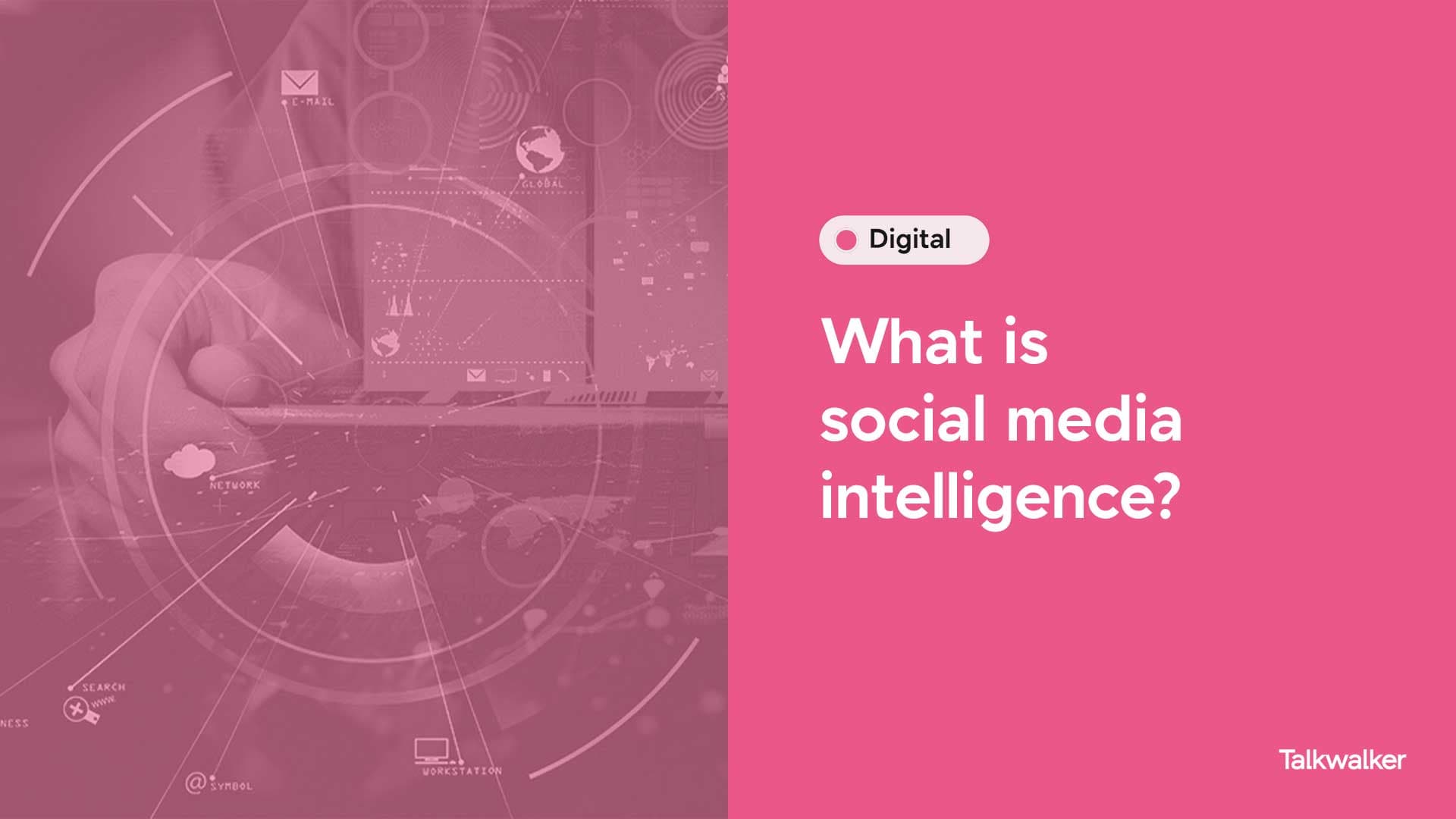
What’s social media intelligence?
Social media intelligence is the process of gathering, analyzing, and interpreting data points across your social media channels.
This data can then be incorporated into your social media reporting — after which, an analyst or social media team can use it to help plan a data-driven social media strategy.
Social media intelligence helps you create a central intelligence zone that helps inform key decisions in every company department.
Below are a few examples of different use cases:
Marketing — Social media intelligence can help brands track the performance of their campaigns, figure out which type of content works best, detect existing influencers and ambassadors and their content, track relevant hashtags, prevent potential PR crises, and more. Tap into billions of online consumer conversations across social, blogs, forums, and news sites in order to monitor brand mentions. And not just using text but also image, video, and speech recognition. Most platforms will also allow you to perform sentiment analysis around your brand.
Research and development — Human-led research is a significant and time-consuming task. Whether you’re using surveys or focus groups, research initiatives are always costly, lengthy, and become outdated after a short period of time. Social media intelligence tools help you follow the evolution of topics, separating passing fads from established trends to find new market opportunities. They allow you to access the full spectrum of public demand across social media platforms and make informed business decisions based on real-time insights instead of data that can become outdated.
Sales — Social media intelligence makes it easier to find potential business opportunities by boosting your lead generation efforts and helping businesses spot communities that are discussing your competitors or asking for recommendations. They represent the perfect pool of prospects willing to pay for a niche you can fill.
Customer experience — Customer retention is vital to companies. Businesses can get closer to their customers with social intelligence by listening to online conversations. Some social media intelligence platforms let you set up alerts on certain topics to detect anomalies and complaints before they turn into a crisis. It’s also a good way to identify trending discussions to engage with — giving a voice to your brand and creating that closeness without having to rely on clients mentioning you and ending up missing a question or query.
Talkwalker’s Social Listening tool lets you set up automatic alerts for brand mentions across 30 social networks and 150 million websites. So, you never miss an opportunity to listen, learn, and be a part of your customers’ conversations.
How do you gather social media intelligence?
Reporting on your social media data is relatively easy — especially with a consumer intelligence platform like Talkwalker. However, intelligent social data collection is different.
To begin with, you need data collected by Web Crawlers and Application Protocol Interface (API) tools. By taking data that you’ve captured, and overlaying it with other data points, you can merge metrics and use this comparison for data.
We’ve listed some simple steps below to help you gather social media intelligence data:
Phase One - Listening
This first stage is about collecting data and organizing it in an intuitive and manageable format.
This will include online mentions and keyword monitoring, as well as competitor mentions and customer interactions.
Social media intelligence platforms help you observe how potential or existing customers are interacting with yours, and your competitors’, specific products and services — letting you gauge the sentiment towards them.
At this stage, it’s important to figure out which software is most compatible with the metrics you want to track and which dashboard interfaces offer the most user-friendly experience.
Phase Two - Analysis
Once you’re confident in the data you need to be collecting – and how it needs to be analyzed – you’re ready to start tracking the performance of your campaigns.
Here, you can begin analyzing keywords that represent reputational risks and set up intelligent alerts to make sure that you’re a few steps ahead of potential crises.
You can also analyze topics that are trending or use filtering to critically examine specific discussions about your products and your market.
To get ready for the third stage, you can begin using more advanced filters, tools, and operators to improve your insight accuracy.
Phase Three - Advanced social media analytics
At this stage, it’s time to use your social media intelligence report to find correlations between data sets and insights, and consider how they could be used to make important decisions.
Instead of looking at data in isolation, you combine it with other data to predict inventory, determine customers’ opinions and tastes based on location, track valuable information, determine clusters of customers’ conversations about your brand, and much more.
This level of data usage may require you to form an analysis group, so you can get the most out of your intelligence plans and turn that data into insights.
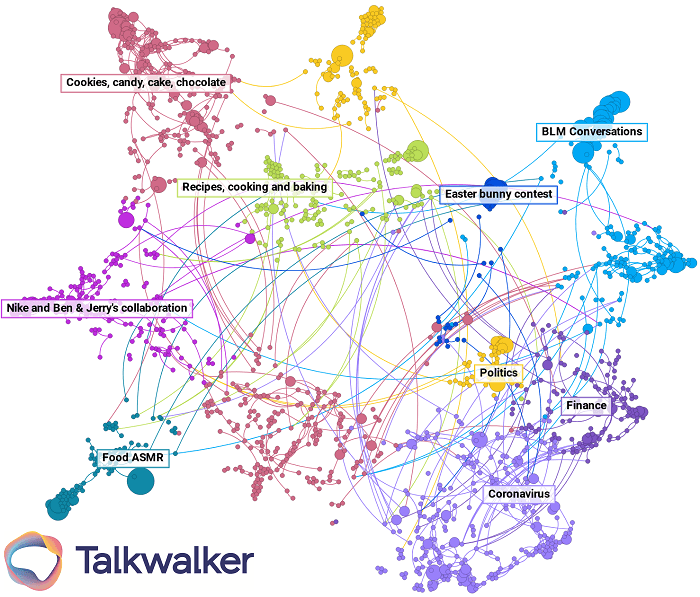
Phase Four - Action your strategy
Once the data has been analyzed, you can begin to implement the findings from your social media intelligence reports into your long-term content plan.
This might mean A/B testing new content based on customer feedback, using data to optimize content for each stage in the sales funnel, or even expanding into new areas where your competitors are thriving but you are yet to address.
When incorporating data into your strategy, consider creating a specific team and delegating ownership of that team to a Chief Data Officer – someone who can oversee how well your company is harnessing its social media intelligence.
It’s important to note that each social media platform will have its own specifics for gathering and getting the most out of social media intelligence.
Social listening and monitoring
Social listening and monitoring are both key tools in a social media intelligence strategy, but their relationship is intricate.
When you’re working with social listening, you are primarily focused on identifying online conversations – keeping your ears open to the online world and what’s being said about you, your brand, and your market.
Social listening is a component of social media intelligence, however, when isolated, it does not adequately give you the tools you need to separate, categorize, or understand data.
Social media monitoring is what we consider the first step in your social listening plan. This is where you survey and gather your information, like your social mentions, actions, sentiment, share of voice, retweets, and more.
The monitoring phase of your social listening is how it sounds – you’re observing and checking online conversations you’re having, trending topics, and how your brand and company are perceived online.
Monitoring is a facet of social media listening, which, in turn, is a facet of social media intelligence. All these pieces work together to build a greater picture of social media intelligence.
What’s a good social media intelligence tool?
Many of the most popular and dedicated social media analytical tools can crawl different sites to harvest information – especially the most well-known platforms and other news sites, review sites, and blogs.
What you can track depends on the measuring tools you’re using. But below are some of the best tools available for those looking to harness the benefits of social media intelligence:
Talkwalker Social Listening
Talkwalker is a sophisticated monitoring and insights platform designed for large agencies and global brands seeking to understand consumer sentiment, manage relationships with public figures, benchmark competitors, and oversee reputation management.
With Talkwalker’s Social Listening tool, you can gather data on brand mentions, sentiment, and more, from over 150 million websites and 30 social channels — a much-needed tool to bolster your company’s social media intelligence capabilities.
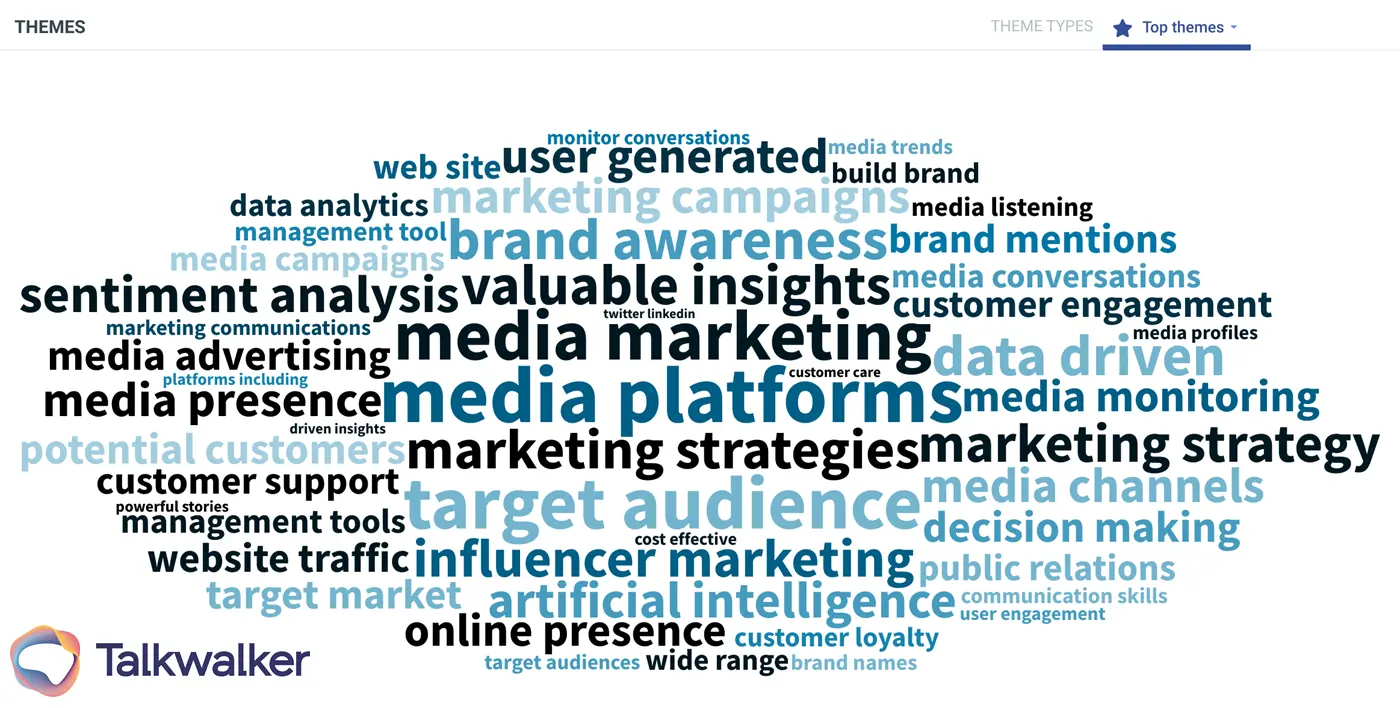
Hootsuite social media monitoring tools
Hootsuite's monitoring tool is seamlessly integrated into an intuitive dashboard within its social media management platform.
Hootsuite is widely recognized for its scheduling capabilities and its ‘Streams’ feature—a complex feed displaying all your brand's mentions, comments, and tags across X (formerly Twitter), Facebook, Instagram, and YouTube. This allows you to easily filter, respond to, or 'like' interactions, and assign tasks to the appropriate team members for follow-up.
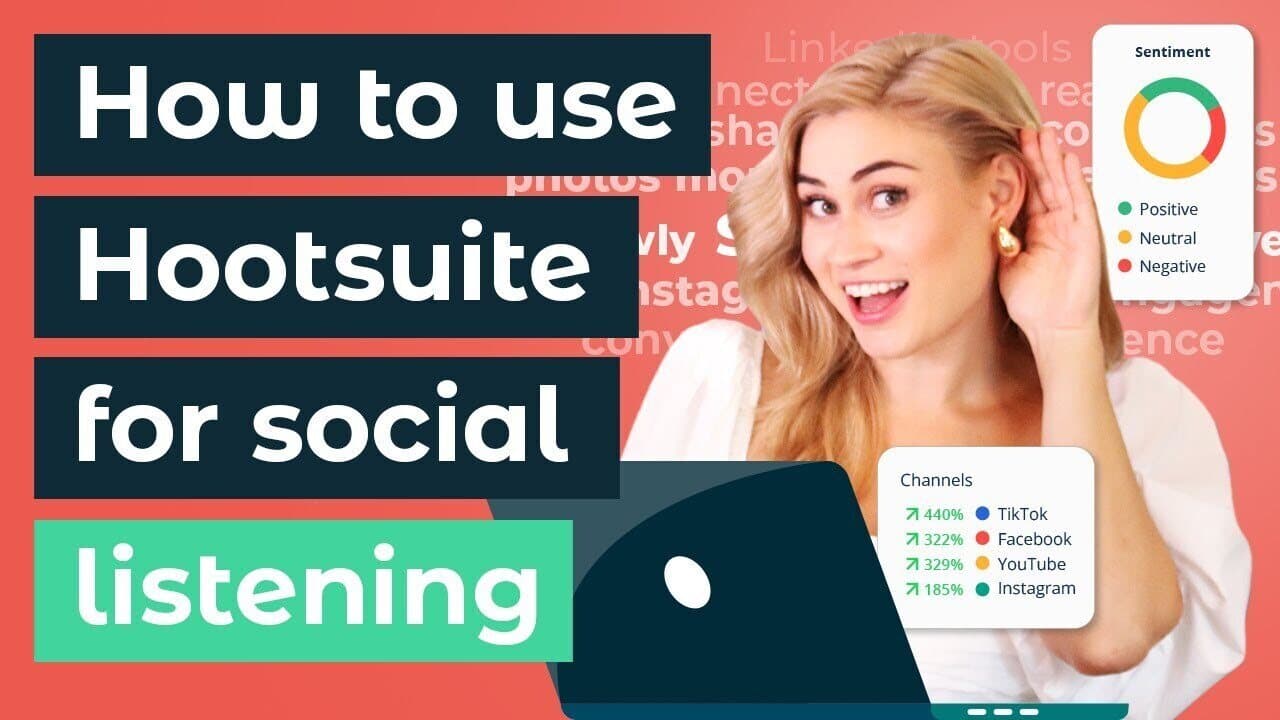
Cyfe
Cyfe allows you to consolidate insights from your media activities, along with site data, sales processes, marketing expenditures, and customer support, into comprehensive, widget-based dashboards.
Getting started is simple — you can effortlessly monitor key platforms for mentions, keywords, and likes. You can choose from their pre-built dashboards or personalize your own using a variety of display widgets.
Google Analytics
Google Analytics can deliver valuable social media intelligence, revealing unique insights into your social media performance and customer satisfaction.
By tracking social media traffic – and subsequent audience behavior – you can find out which social media content is performing well among your customers, as well as more granular data on how they behave on your site. This can be used to optimize your content at each stage of the marketing funnel, drive relevant calls to action, and more.
How do you choose your social media intelligence tool?
It’s clear that a comprehensive and targeted social media intelligence campaign can reveal valuable insights that can ultimately be used to improve the performance of your content and, as a result, customer satisfaction.
So, it makes sense to choose the right tool for you. When choosing a social media intelligence platform, consider the following:
Function:
Ask yourself how you’ll use the data. Some tools are better equipped for monitoring social data metrics while others are better at examining public relations posts. Figuring out what you plan to do with your social media intelligence will help direct you toward the best tool for your needs.
Characteristics:
Once you’ve figured out the purpose of the intelligence tool you’re looking for, you should start narrowing down which features are important to help you accomplish those goals. Do you need search functions? Should your tool be able to create reports quickly? Should it cover multiple platforms and be customizable?
Price:
Cost is an important consideration. While you might want the tool with the most features possible, you must make sure you’re picking the best offering for your price range. Typically, a lower price means fewer features, which is why it’s important to assess which features are must-haves, before you look at price.
Scale:
How broadly do you plan to use these social media intelligence tools? Will it be specific to one department or company-wide? How much do you plan to monitor? Will you be creating a team specifically dedicated to this initiative? Answering these questions will help you establish how sophisticated the platform will need to be.
For additional information on how to pick the best social media intelligence tool, check out our detailed guide!
Brands that use social media intelligence
These companies use social media intelligence software and strategies to understand the impact of their social media efforts and produce more targeted content for their audience:
STEF Group: This logistics firm uses social listening to analyze public perception and debate on current issues, inspire social media communications, and feed its editorial calendar – adapting its offering amid major changes to food consumption patterns, to meet the needs of its modern consumers.
DIE PR-BERATER: This leading agency uses real-time alerts and data to make sure it’s able to respond extremely fast to all relevant brand mentions or stories – which is vital for effective reputation and crisis management.
Dubai TV Channels: These TV channels leveraged social media intelligence to understand exactly how – and where – their audience is communicating and delivered relevant content in response. This allowed them to meet the unique and authentic needs of their consumers with personalized content.
Find out how more businesses are using social media intelligence to deliver an unrivaled customer experience and beat their competitors to every story in our Case Studies.
Why choose Talkwalker?
Now you’re an expert on all things social media intelligence, you may be looking for the perfect tool to boost your efforts.
Talkwalker’s Social Listening tool helps you build insights on your consumers with an intuitive platform, first-class support, and forward-thinking feature releases.
Never miss a mention and tap into consumer sentiment to understand how your content, products, and more are landing with your audience.
You can then use this data to finetune your content to improve social media performance.
